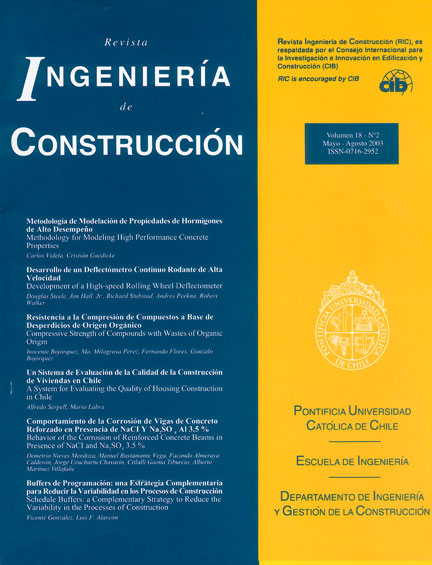METHODOLOGY FOR MODELING HIGH PERFORMANCE CONCRETE PROPERTIES
Keywords:
high performance concrete, BFS Cement, compressive strength, flexural strength, elastic modulus, abrasion resistance, autogenous shrinkage, drying shrinkageAbstract
In this research, the most important properties of HPC were analyzed. The study was focused on HPC with specified 28 days compressive cylindrical strengths between 60 to 110 MPa and made with locally available materials: Rapid Hardening Portland Blast Furnace Slag Cement, siliceous aggregates and commercial admixtures. Compressive and flexural strength, elastic modulus, abrassion resistance and shrinkage properties were analyzed and modeled using innovative methods. Laboratory test results showed that it is possible to develop a general model for compressive strength combining a hyperbolic equation for strength evolution and an exponential equation for mix design parameters. It was also concluded that the measured moduli of elasticity are lower than the predicted values by ACI 363 and ACI 318 equations, and that the square root of the compressive strength did not turn out to be a good predictor of the flexural strength, for the used materials. Furthermore, it was concluded that the ASTM C944-99 abrassion test is not very effective to measure abrassion resistance of HPC, due to the high variability of results. Strain measurements showed that autogenous shrinkage is a significant part of the total shrinkage. It was shown that the FIB 2000 model is adequate to predict shrinkage of HPC, but some coefficients must be updated to local conditions. An updating method for shrinkage models was successfully applied.


